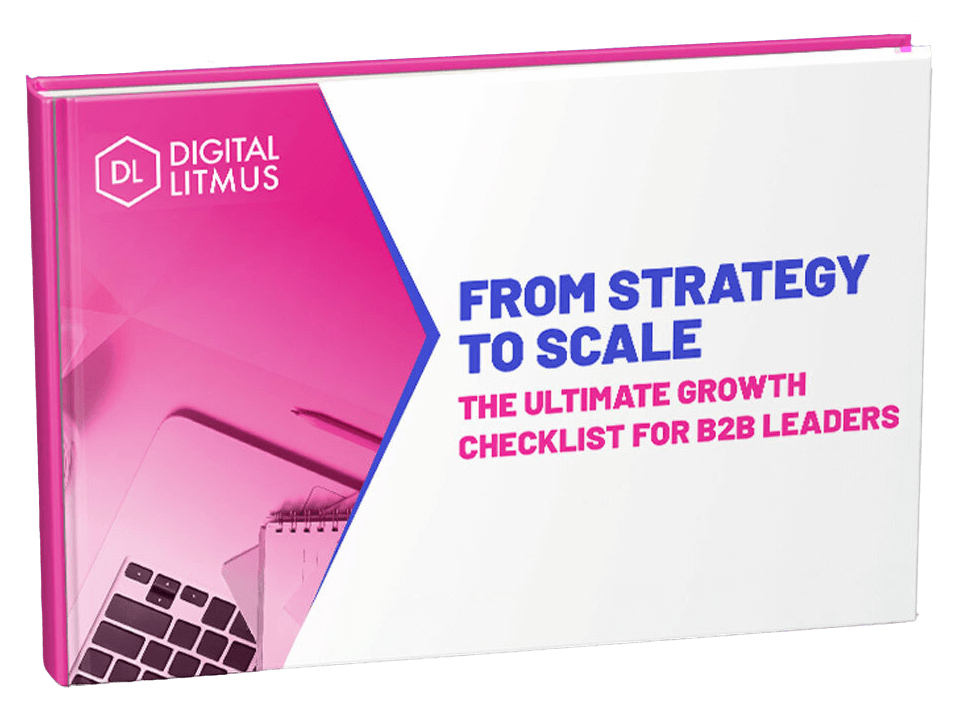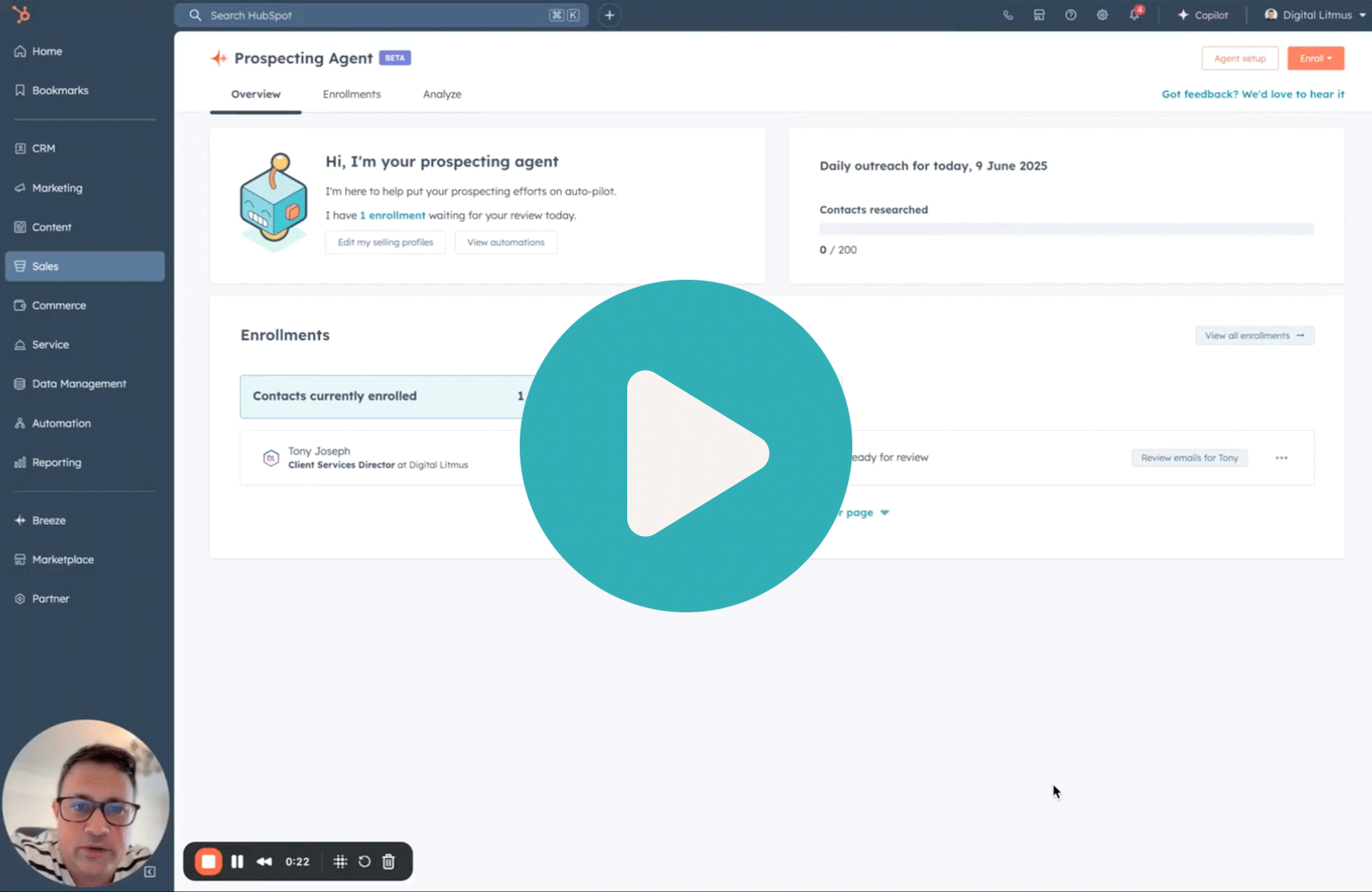If you're running a growing B2B business, chances are your sales team is doing a lot with limited time. Maybe you're using HubSpot but still relying on spreadsheets to manage qualification, juggling CSV exports, manual tracking, and constant back-and-forth between tools. Or your CRM is cluttered with contacts that aren't going anywhere, making it hard to forecast accurately or spot real opportunities buried among the noise.
It's frustrating, and it's not your team's fault.
The issue lies in how traditional CRMs are set up. They force binary thinking: someone's either not qualified or they're an opportunity. There's no in-between, no space for that crucial qualification work that actually determines whether a lead is worth pursuing.
Your team ends up making impossible choices: add every inquiry as a deal (inflating your pipeline and skewing forecasts), or manage qualification outside the CRM entirely (losing visibility and creating data silos).
That's where the HubSpot Lead Object comes in.
What Is the Lead Object?
The Lead Object is a new CRM record type that sits between contacts and deals. Think of it as your qualification layer, a structured workspace where your sales team can properly evaluate prospects before they become opportunities.
You have contacts (people in your database), deals (qualified opportunities), and now leads (contacts your team is actively qualifying). It adds a crucial, missing step to your sales process that mirrors how B2B sales actually works in the real world.
Here's what it looks like in practice:
A new inbound enquiry or MQL enters your database as a contact. They've downloaded a whitepaper, attended a webinar, or filled out a contact form, but you don't know yet if they're a real opportunity.
Your sales team creates a lead record to track the qualification process. This becomes the workspace for discovery calls, needs assessment, stakeholder mapping, and budget conversations.
As the lead progresses through your qualification stages: initial contact, needs identified, budget confirmed, decision process understood, you gather the information needed to make an informed decision.
Once that lead meets your internal criteria (BANT, MEDDIC, or whatever framework you use), it seamlessly becomes a deal with all the context and history preserved.
No more bloated pipelines filled with "maybe someday" prospects. No more lost leads in spreadsheets. Just clarity, control, and a qualification process that actually reflects how modern B2B sales works.
Why This Matters to Your Sales Process
Sales pipelines often become a dumping ground for hopeful leads that will never convert. Your team feels pressure to show activity, so every inquiry gets added as a deal. Before long, you're juggling spreadsheets to track "real" opportunities versus "maybe someday" prospects, jumping between tools to get a complete picture, and struggling to identify who's truly ready to buy versus who's just browsing.
The result? Forecasts that swing wildly from month to month. Reps spending time on unqualified leads. Managers who can't tell where the real problems are because everything looks like an "opportunity."
HubSpot recognised this widespread challenge, they heard it from thousands of sales teams and built the Lead Object specifically to address it. It gives your sales team a clean, structured space to work on active leads without inflating your deals pipeline or losing visibility in external tools.
Why Traditional CRMs Let You Down
In most B2B businesses, especially those growing fast or lacking dedicated RevOps support, qualification happens in the shadows. Your team gets leads from marketing campaigns, referral partners, trade shows, or cold outreach, but the CRM forces an immediate decision: is this a deal or not?
If you say yes too early, your pipeline becomes meaningless. If you say no, where do you track all that crucial qualification work? Most teams end up with hybrid approaches, some qualification in the CRM, some in spreadsheets, some in email threads, some just in people's heads.
All that crucial qualification work, the discovery calls where you understand their current process, the budget conversations where you confirm they can actually buy, the stakeholder mapping where you figure out the decision-making process happens in a grey area your CRM doesn't handle well. You lose context, miss follow-ups, and struggle to coach effectively because managers can't see what's actually happening in the qualification process.
The result? Poor forecasting because you can't distinguish between real opportunities and wishful thinking. Lost productivity as reps context-switch between tools. Missed opportunities because leads fall through the cracks. And managers who can't effectively coach because they can't see where the process is breaking down.
The Lead Object eliminates that grey area by giving qualification work a proper home in your CRM.
What the Lead Object Actually Does
1. Dedicated Lead Pipeline View
Your team can manage leads in a pipeline that's completely separate from your deal stages, with full kanban-style visualisation. You can tailor stages to your actual process—not generic sales stages, but the specific steps your team takes to qualify prospects.
For example, a SaaS company might use "Initial Contact" → "Needs Assessment" → "Technical Fit Confirmed" → "Budget Qualified" → "Decision Process Mapped" → "Ready for Demo."
A consultancy might use "Discovery Call Scheduled" → "Current State Understood" → "Pain Points Identified" → "Authority Confirmed" → "Budget Range Discussed" → "Proposal Requested."
Each stage can have its own requirements, automation rules, and success criteria.
2. Multiple Leads per Contact
This is particularly powerful for complex B2B sales. The same contact might inquire about different products, represent different projects, or re-engage months after an initial conversation went cold. Instead of trying to track everything in one record, you can create separate lead records for each distinct qualification cycle.
For example, a contact at a large enterprise might generate leads for Q1 software implementation project, Q3 training services enquiry, and Q4 additional licensing discussion. Each gets its own lead record with its own timeline, context, and qualification status.
3. Smart Automation
HubSpot's workflow engine becomes incredibly powerful when combined with leads. You can automatically:
- Create lead records from form submissions, meeting bookings, or marketing campaign responses
- Move leads through stages based on specific activities (demo attended, pricing document downloaded, technical call completed)
- Set follow-up tasks based on stage progression or time elapsed
- Create deals automatically when leads meet your qualification criteria
- Archive or reassign leads based on engagement levels or time in stage
This automation ensures nothing falls through the cracks while reducing manual data entry for your team.
4. Clear Manager Visibility
Sales leaders get unprecedented visibility into the qualification process. Instead of guessing why deals aren't converting, managers can see exactly where leads are getting stuck. Are prospects dropping off after the discovery call? Are budget conversations not happening? Is one rep consistently better at moving leads through qualification?
The lead pipeline becomes a coaching tool, showing managers exactly where to focus their attention and which reps need support with specific qualification skills.
5. Activity Syncing
All activities logged against a lead record automatically sync to the associated contact and company records. This means your entire team has context, marketing can see which leads are progressing, customer success can understand the sales process, and executives can get accurate pipeline reports without worrying about data silos.
How This Looks in Practice
In the first few weeks Your deals pipeline becomes immediately more accurate. Instead of 47 "opportunities" in various stages of maybe, you have 12 real deals and 35 leads in qualification. Forecasting becomes possible again because your pipeline reflects genuine opportunities, not hopeful prospects.
By month one Patterns start emerging. You can see that leads getting stuck in "Needs Assessment" usually means the discovery call didn't uncover enough pain points. Leads that jump from "Initial Contact" straight to "Ready for Proposal" tend to stall out later because qualification was rushed. Your team starts having more focused conversations about qualification criteria and process improvement.
By month two Managers can coach more effectively. Instead of general advice about "qualifying better," they can see that Sarah is great at initial conversations but struggles with budget discussions, while Tom tends to rush through stakeholder mapping. Coaching becomes specific and actionable.
By month three You're closing better-qualified deals faster. Sales cycles shorten because leads entering your deals pipeline are genuinely ready to buy. Conversion rates improve because your team focuses energy on prospects who actually fit your ideal customer profile. Revenue becomes more predictable because your pipeline reflects reality.
A Few Things to Know Before You Start
Available on Sales Hub Pro & Enterprise only. This isn't a free feature—you need the paid tiers to access the Lead Object functionality.
Lives in the Sales Workspace, not the main CRM menus. Your team needs to know where to find it, and it requires some adjustment if they're used to the main contacts/deals navigation. Training is critical for adoption.
No standard object listing like with contacts and deals. You can't just browse all leads like you can browse all contacts. You'll need to use the pipeline view or create custom reports to see lead data in bulk. Workflows become essential for managing large volumes of leads.
Data doesn't transfer automatically between leads and deals. When a lead becomes a deal, you need to explicitly map which information carries over. Custom properties, notes, and attachments won't automatically transfer unless you set up workflows or manual processes to handle this.
Reporting requires some setup. While HubSpot provides basic lead reports, you'll want to create custom reports to track conversion rates, qualification velocity, and rep performance across the lead-to-deal journey.
Why It's Worth It
✅ Trustworthy Forecasts Your pipeline reflects only real opportunities with genuine buying intent, not hopeful prospects or marketing leads that haven't been properly qualified.
✅ Focused Sales Efforts Reps stop wasting time on unqualified leads and can concentrate their energy on prospects who actually fit your ideal customer profile and have the budget and authority to buy.
✅ Better Coaching Managers can step in with precision and impact, addressing specific qualification skills rather than giving generic advice about "selling better."
✅ Faster Sales Cycles Better-qualified leads mean shorter deal cycles because prospects entering your sales pipeline are genuinely ready to evaluate and purchase.
✅ Improved Team Performance Clear qualification criteria and visible process stages help reps develop better qualification skills and make more consistent decisions about lead quality.
✅ Reduced Revenue Volatility More predictable pipeline conversion rates lead to more accurate revenue forecasting and better business planning.
The Lead Object isn't just a new feature. It's a shift in how you manage sales qualification, built to reflect how modern B2B teams actually work, with the complexity and nuance that real qualification requires.
Ready to Clean Up Your Sales Pipeline?
Setting up the Lead Object properly requires strategic thinking about your qualification process, careful workflow design, and thoughtful change management with your team, but that's where we come in. We help B2B teams define their qualification criteria, map their real-world sales process, build intelligent automation, and train teams so the Lead Object delivers immediate value and long-term results.
👉 Want to bring structure and clarity to your sales process? Get in touch. We'll help you map, automate, and scale the Lead Object for maximum impact, with the depth and customisation your growing business needs.

Looking to maximise the benefits of your marketing technology?
Look no further than our team of seasoned MarTech professionals. While we are a proud HubSpot Platinum partner, we are also well-versed in a range of marketing technology tools and can assist you with most platforms. Learn more about our comprehensive MarTech services.




.jpg)